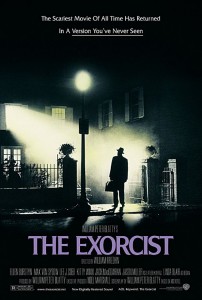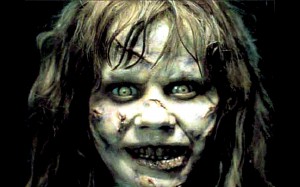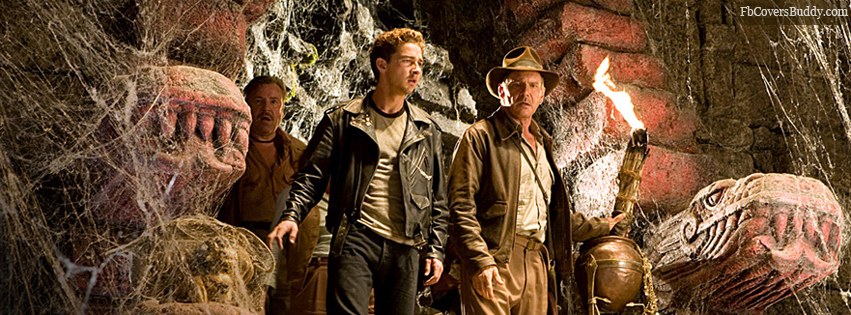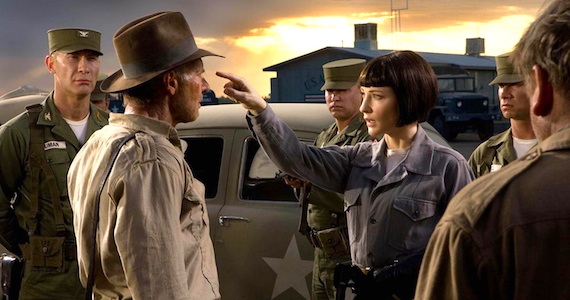
“Doubtless this tale of spirit possession in Georgetown packs a punch, but so does wood alcohol,“ wrote Reader critic Don Druker in an earlier review of this. I wouldn’t be quite so dismissive: as a key visual source for Mel Gibson’s depiction of evil in The Passion of the Christ as well as an early indication of how seriously pulp can be taken when religious faith is involved, this 1973 horror thriller is highly instructive as well as unnerving. William Friedkin, directing William Peter Blatty’s adaptation of his own novel, aims for the jugular, privileging sensation over sense and such showbiz standbys as vomit and obscenity over plodding exposition. This 2000 rerelease runs 132 minutes, 11 minutes longer than the original; with Ellen Burstyn, Max von Sydow, Jason Miller, Linda Blair, and Lee J. Cobb. R. (JR)
 Read more
Read more
Made for the unthinkable sum of $7,000, Paul E. Garstki’s independent black-and-white Chicago-based feature both profits and suffers from its impoverished budget. On the plus side, a largely postdubbed sound track allows the filmmakers to tell parts of the story through the ingenious economical device of using answering-machine messages and imaginary phone conversations offscreen. A thoughtful use of local talent (stage actors John Ellerton, Warren Davis, and Diana Zimmer as the three leads and lots of local independent filmmakers in secondary parts) and locations also makes the best use of William Holst’s somewhat minimalist script, adapted from a story by Garstki. A reclusive art critic hires a young protege, who moonlights as a surveillance photographer, to go to work on a young woman (an odd plot with faint echoes of The Draughtsman’s Contract and Paul Bartel’s The Secret Cinema, without much of the humor connected to either). The main budgetary drawback is the nearly nonexistent social context; the stilted art-world talk generally fails to convince because there isn’t enough of a world in the film to establish it as either parody or the genuine article, and the characters themselves seem at times excessively limited by the exigencies of the plot. The result, then, is uneven but singular–a quirky, rather disturbing little film about voyeurism and loneliness. Read more

The unholy mix of George Lucas’s colonialist nostalgia and Steven Spielberg’s fluency with action becomes more self-conscious in this fourth Indiana Jones outing. In 1957, two decades after the events of Indiana Jones and the Last Crusade, the hero (Harrison Ford) joins forces with his old flame from Raiders of the Lost Ark (Karen Allen) and a young punk (Shia LaBeouf) to combat a Commie villain (Cate Blanchett, doing a variation on Garbo’s Ninotchka) in a remote corner of Peru. The character and plot contrivances are dumber than ever, but this is basically vaudeville, not narrative, and the thrills keep coming. (Once Indy has survived a nuclear blast early on, going over three waterfalls in a row without wetting his lighter is par for the course.) Spielberg’s extravagant action, much of it staged on what look like old sets from King Kong, includes pointed steals from The Naked Jungle (1954), Land of the Pharaohs (1955), The Ten Commandments (1956), and his own Close Encounters, E.T., and A.I. PG-13, 124 min. (JR) Read more
Read more
From the Chicago Reader (August 25, 1995). — J.R.

Valley of Abraham
*** (A must-see)
Directed and written by Manoel de Oliveira
With Leonor Silveira, Cecile Sanz de Alba, Luis Miguel Cintra, Rui de Carvalho, Luis Lima Barreto, Diogo Doria, Jose Pinto, and Isabel Ruth.

I think the most important intellectual discovery I’ve made in the past year came from the early pages of Eric Hobsbawm’s The Age of Extremes: A History of the World, 1914-1991. In a way, it’s an observation so obvious that I wonder why it never occurred to me before: “Unlike the ‘long 19th century,’ which seemed, and actually was, a period of almost unbroken material, intellectual and moral progress…there has, since 1914, been a marked regression from the standards then regarded as normal in the developed countries and in the milieus of the middle classes and which were confidently believed to be spreading to the more backward regions and the less enlightened strata of the population….Since this century has taught us, and continues to teach us, that human beings can learn to live under the most brutalized and theoretically intolerable conditions, it is not easy to grasp the extent of the, unfortunately accelerating, return to what our 19th century ancestors would have called the standards of barbarism.” Read more






